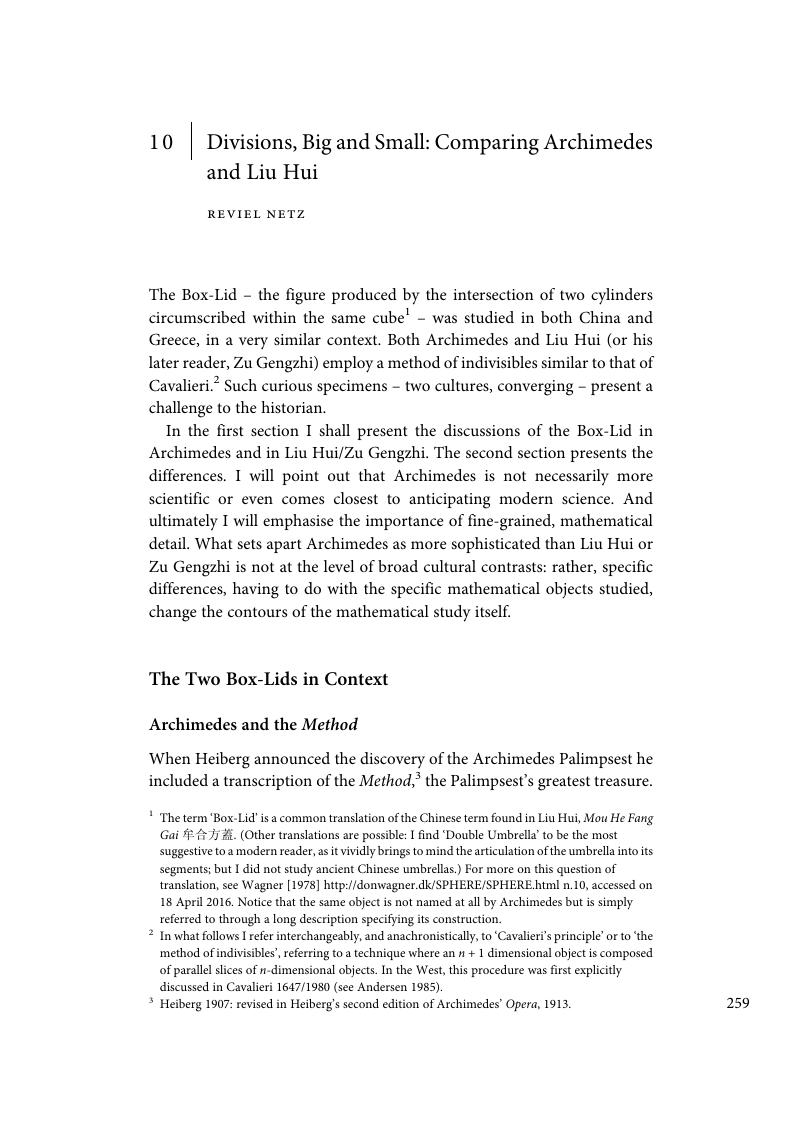Book contents
- Ancient Greece and China Compared
- Ancient Greece and China Compared
- Copyright page
- Contents
- Figures
- Acknowledgements
- Notes on Editions
- Contributors
- Introduction: Methods, Problems and Prospects
- Part I Methodological Issues and Goals
- Part II Philosophy and Religion
- Part III Art and Literature
- Part IV Mathematics and Life Sciences
- 10 Divisions, Big and Small: Comparing Archimedes and Liu Hui
- 11 Abstraction as a Value in the Historiography of Mathematics in Ancient Greece and China: A Historical Approach to Comparative History of Mathematics
- 12 Recipes for Love in the Ancient World
- Part V Agriculture, Planning and Institutions
- Afterword
- Index
- References
10 - Divisions, Big and Small: Comparing Archimedes and Liu Hui
from Part IV - Mathematics and Life Sciences
Published online by Cambridge University Press: 21 December 2017
- Ancient Greece and China Compared
- Ancient Greece and China Compared
- Copyright page
- Contents
- Figures
- Acknowledgements
- Notes on Editions
- Contributors
- Introduction: Methods, Problems and Prospects
- Part I Methodological Issues and Goals
- Part II Philosophy and Religion
- Part III Art and Literature
- Part IV Mathematics and Life Sciences
- 10 Divisions, Big and Small: Comparing Archimedes and Liu Hui
- 11 Abstraction as a Value in the Historiography of Mathematics in Ancient Greece and China: A Historical Approach to Comparative History of Mathematics
- 12 Recipes for Love in the Ancient World
- Part V Agriculture, Planning and Institutions
- Afterword
- Index
- References
Summary

- Type
- Chapter
- Information
- Ancient Greece and China Compared , pp. 259 - 289Publisher: Cambridge University PressPrint publication year: 2018
References
- 1
- Cited by



